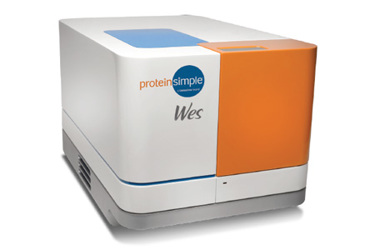Simple Western Analysis Of Adeno-Associated Virus (AAV) Proteins For Cell And Gene Therapy
By Nishant Pawa, Ph.D., Anusha Seneviratne, Ph.D. and Tony Bou Kheir, Ph.D., Cell and Gene Therapy Catapult, London, United Kingdom; Caroline Odenwald, Ph.D. and Katja Betts, EMSc, PROGEN, Heidelberg, Baden-Württemberg, Germany; Chris Heger, Ph.D., Yasef Khan, Charles Haitjema, Ph.D. and Daniela Ventro, Ph.D., ProteinSimple, San Jose, CA, USA

In gene therapy, a therapeutic transgene is delivered to cells and patient tissues to treat an inherited or developed disease. This genetic reprogramming is typically achieved with viral vectors, the most promising of which is the adeno-associated viruses (AAV)1. As a safe and effective vector, AAV is the workhorse of in vivo gene therapy, with three approved products and many more currently in clinical trials1,2. An AAV particle is composed of 60 capsid protein molecules, with subunits of VP1, VP2 and VP3 at a ratio of 1:1:101. The subunits are encoded by the cap gene and are created by alternative splicing and translation from different start codons.
During AAV manufacturing, critical quality attributes must be monitored, including the presence, identity and purity of viral vector proteins3. Traditionally, the identity of these proteins is monitored by Western blot using sodium dodecyl sulfate polyacrylamide gel electrophoresis (SDS-PAGE). However, Western blotting is notoriously challenging; it’s labor-intensive, suffers from poor reproducibility, and is only semi-quantitative. For this reason, the Cell and Gene Therapy Catapult (CGTC), an independent center of excellence at the forefront of technology and innovation for cell and gene therapy commercialization, is adopting next generation technologies to advance quality control (QC) of AAV-mediated gene therapy3. In this application note, you’ll see how CGTC has used highly-specific antibodies exclusively manufactured by PROGEN with fully automated Simple Western™ assays on Wes™ to monitor and characterize AAV capsids during product purification.
Get unlimited access to:
Enter your credentials below to log in. Not yet a member of Bioprocess Online? Subscribe today.
